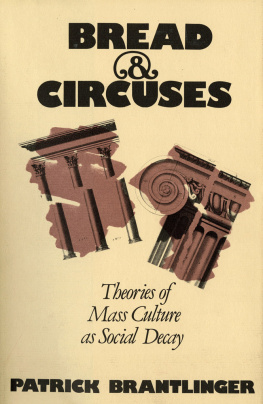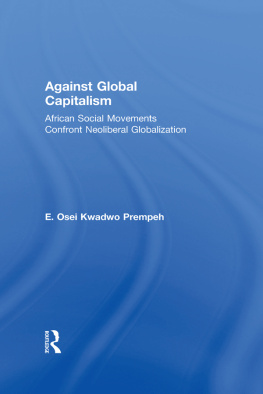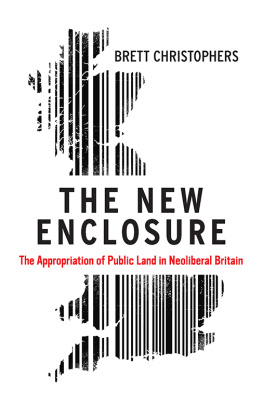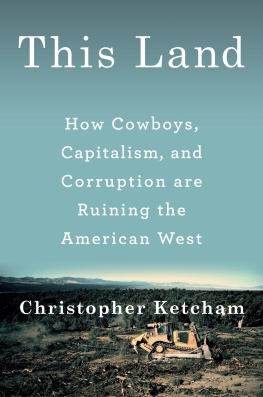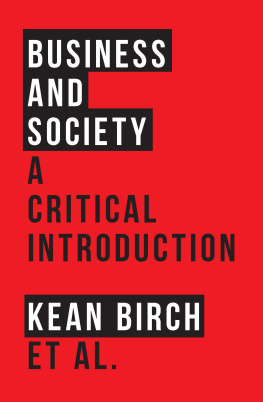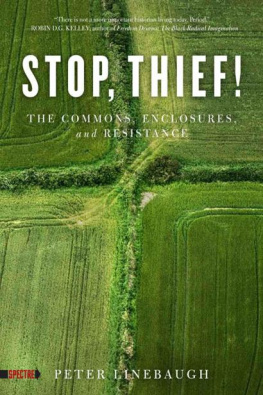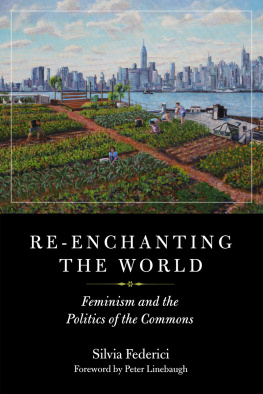
p.i
BARBED WIRE
A call to transform the way we think about property, this book examines how capitalism has from its origins sought to enclose or privatize the commons, or land and other forms of property that had been viewed as communally owned, and argues that neoliberal economic policies and the corporate takeovers of urban spaces, prisons, schools, the mass media, farms, and natural resources have failed to serve the public interest. A study of corporate globalization and the continuation of empire after the era of political decolonization, it begins with the fencing of the West starting in the 1870s, and moves to examine recent phenomena such as urbanization, mass incarceration, financialization, and the treatment of people as commodities in the context of the longue dure of land enclosures, empire, and capitalism. Highlighting the threatened elimination of the public domain as a result of corporate efforts to privatize public utilities, prisons, schools, forests, seeds, and just about everything else that can yield a profit, Barbed Wire: Capitalism and the Enclosure of the Commons asks what it would mean if, instead of either private or public property, our most fundamental conception of property were communal. Would a redefinition of property from a community perspective lead us beyond the military-industrial complex?
Patrick Brantlinger is James Rudy Distinguished Professor (Emeritus) in the Department of English and Cultural Studies at Indiana University, USA.
This is an expert tour of the many borders, past and present, that parcel up our collective existence; a deeply engaged, historically informed guide to privatization drives and their moral implications. Patrick Brantlinger, as always, probes deeply and uncovers truths with eloquence. An outstanding read.
Jan Nederveen Pieterse ,
University of California Santa Barbara, USA.
p.iii
BARBED WIRE
Capitalism and the Enclosure
of the Commons
Patrick Brantlinger
p.iv
First published 2018
by Routledge
2 Park Square, Milton Park, Abingdon, Oxon OX14 4RN
and by Routledge
711 Third Avenue, New York, NY 10017
Routledge is an imprint of the Taylor & Francis Group, an informa business
2018 Patrick Brantlinger
The right of Patrick Brantlinger to be identified as author of this work has been asserted by him in accordance with sections 77 and 78 of the Copyright, Designs and Patents Act 1988.
All rights reserved. No part of this book may be reprinted or reproduced or utilised in any form or by any electronic, mechanical, or other means, now known or hereafter invented, including photocopying and recording, or in any information storage or retrieval system, without permission in writing from the publishers.
Trademark notice : Product or corporate names may be trademarks or registered trademarks, and are used only for identification and explanation without intent to infringe.
British Library Cataloguing-in-Publication Data
A catalogue record for this book is available from the British Library
Library of Congress Cataloging-in-Publication Data
A catalog record for this book has been requested
ISBN: 978-1-138-56437-4 (hbk)
ISBN: 978-1-138-56439-8 (pbk)
ISBN: 978-1-315-12238-0 (ebk)
Typeset in Bembo
by Swales & Willis Ltd, Exeter, Devon, UK
p.v
For Andy, Susan, and Jeremy
p.viii
Over the years, many friends and colleagues have provided me with information and new ideas, offered advice, and inspired me. Foremost among them is my late wife, Ellen Brantlinger, author of Dividing Classes and many other works on education and equity. Our countless discussions about economic inequality, racism, feminism, and social justice make her virtually a co-author of Barbed Wire . There are too many others to name them all, but those who have been most important as I have worked on this project include Todd Avery, Purnima Bose, Milton Fisk, Todd Kuchta, Sara Mauer, Jim Naremore, Jan Nederveen Pieterse, and Joe Varga. I thank as well the many students who have taken my Victorian and Cultural Studies classes and whose dissertations Ive been privileged to read and evaluate. I have always learned a great deal from those I have taught, much more than they realize. And I am grateful to a number of organizations that have been supportive. Besides Indiana University, these include the Midwest Victorian Studies Association, the Midwestern Conference on British Studies, the CUNY Graduate Center, and the University of Kansas Humanities Center.
p.ix
They claim this mother of ours, the Earth, for their own use, and fence their neighbors away from her, and deface her with their buildings and their refuse.
Sitting Bull
When I started this project, I guessed that no one had ever written a book about barbed wire. I soon discovered that there are several books and many articles about it. Henry and Frances McCallums The Wire That Fenced the West contains everything anyone would ever want to know about the invention of barbed wire and its use in enclosing much of the Western US. Barbed wire may evoke fencing the West, but it just as readily evokes prisons, zoos, junkyards, power plants, and ruined cities. Alan Krells The Devils Rope deals with many of its literary and artistic representations, such as W. H. Audens Memorial for the City: The barbed wire runs through the abolished City. Auden wrote his poem shortly after World War II, so he had plenty of abolished cities to choose from. The most haunting artistic and photographic images of barbed wire that Krell discusses are those featuring Nazi concentration camps. Reviel Netzs Barbed Wire: An Ecology of Modernity also goes well beyond fencing the American West to examine the uses of barbed wire in military and penal contexts from the time of the Spanish-American and Anglo-Boer wars to the 2000s.
This book, however, is not primarily about barbed wire. It is, as the subtitle says, about capitalism and the enclosure or privatization of what had been communally owned land and other forms of the commons. Many inventions have contributed to capitalist modernization, but few capture the ambiguity of that process as sharply as barbed wire; it serves here primarily as a metaphor for that process. Barbed wire is a recent invention, dating from 1874, a decade after the Civil War. Capitalism is much older, of course, emerging gradually in Europe from late medieval feudalism, gathering force through empire-building, slavery, and the Industrial Revolution. Besides covering an immense span of history, capitalism has involved many different processes, including the development of the corporate form, and also treating just about everything as potentially private property and extracting as much surplus value or profit as it can from labor.
p.x
Much has been written about the early stages of capitalism and the enclosure movement or the enclosure of the commons in Europe. Marx saw that movement as the main form of primitive accumulation, which was the basis for the development of capitalism out of feudalism. He also interpreted Western imperialism starting in the late 1400s in terms of primitive accumulation:
The discovery of gold and silver in America, the extirpation, enslavement and entombment in mines of the indigenous population of that continent, the beginnings of the conquest and plunder of India, and the conversion of Africa into a preserve for the commercial hunting of black skins, are all things which characterize the dawn of the era of capitalist production. These idyllic proceedings are the chief moments of primitive accumulation.


